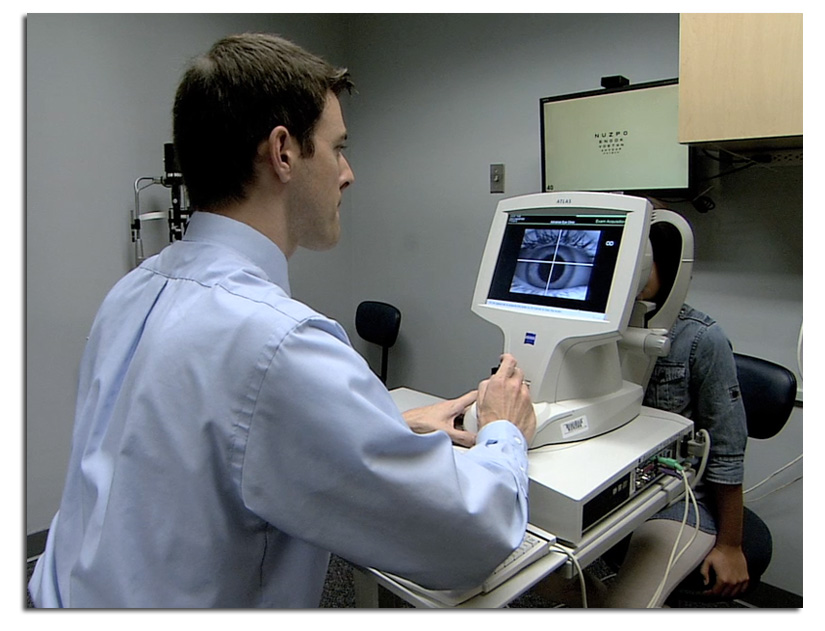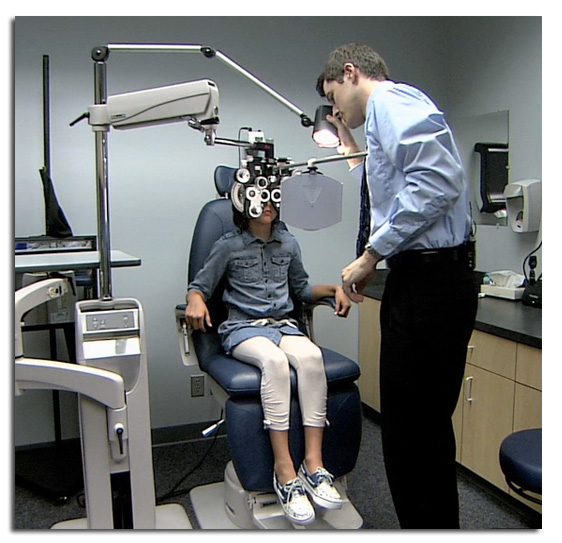David Berntsen, assistant professor at the University of Houston College of Optometry, is investigating more effective treatments of nearsightedness— offering hope to kids like Chloe.
“Tell me the smallest number of letters you can see without squinting,” asks Berntsen of his 9-year-old patient. Chloe is among the one-third of the U.S. population with myopia, or nearsightedness.
 “For adults, things like Lasik and refractive surgery are an
option, but for a child, when their prescription is still changing, those
options aren’t there,” says Berntsen. “For a child, the options are corrective
lenses either in spectacles or in contact lenses.”
“For adults, things like Lasik and refractive surgery are an
option, but for a child, when their prescription is still changing, those
options aren’t there,” says Berntsen. “For a child, the options are corrective
lenses either in spectacles or in contact lenses.”
Berntsen and his colleagues at The Ohio State University have conducted research on which lenses are most effective in slowing the progression of myopia. The study was funded through a grant from the National Institutes of Health National Eye Institute.
 “This study was looking at mechanisms of myopia so we could
try to understand why kids become nearsighted and what type interventions might
be beneficial to children to hopefully see if we can develop ways to slow how quickly
their myopia increases,” said Berntsen.
“This study was looking at mechanisms of myopia so we could
try to understand why kids become nearsighted and what type interventions might
be beneficial to children to hopefully see if we can develop ways to slow how quickly
their myopia increases,” said Berntsen.
Berntsen’s study found a small, yet statistically significant, slowing of myopia progression in children wearing no-line bifocals compared to those who simply wore single-vision lenses. But Berntsen is quick to not that the results do not suggest that children be fitted with no-line bifocal lenses solely for the purpose of slowing the progression of myopia. Rather, he says, the study is promising for the development of new lenses that will one day benefit kids like Chloe by slowing the progression of the nearsightedness into adulthood.